Note
Makes sense. Looks like in real life Phaya is only used in Thailand, since it's a Thai word, but for a worldbuilding project I can see how the name can be used for a species found elsewhere as well.
Oh! I didn't realise it was only used in Thailand and not in India as well, I thought it was used in both places, I will work out something better to call the Indian naga, thanks for the head's up!
1 note
·
View note
Note
Is the Phaya Naga from India? I've only ever seen the "Phaya" part as from Thailand, with them being called Naga and nothing else in India.
'phaya' means 'great', so it means 'great naga'! 'Naga' in India can mean dragon, but it can also mean 'cobra' or 'snake' so I'm using 'phaya naga' rather than just 'naga' to make it clearer that I'm taking about giant serpents rather than cobras or snakes :3
Either naga or phaya naga is fine!
2 notes
·
View notes
Text
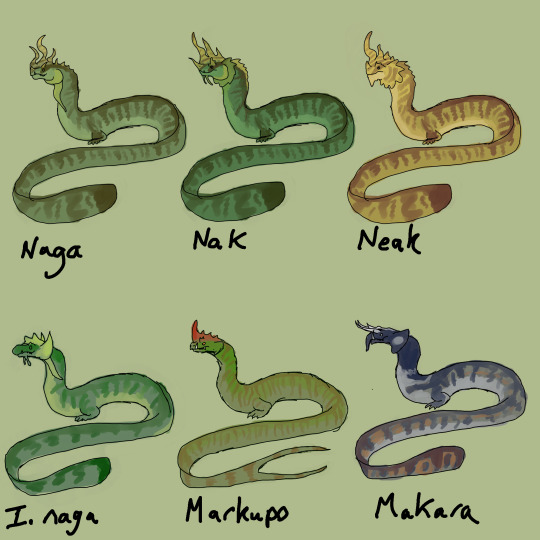
Doodling the naga family for Dracones Mundi, I think I might be redoing the makara and moving it to a different family (not serpentine), but for now these are the nagas
Indian phaya naga
Thai paya nak
Cambodian neak
Indonesian naga
Philippino markupo
Makara, which is found in many south asian countries
11 notes
·
View notes
Text

Bluebeard Drake
(Ostensibly) not named for its blue throat, but for its habit of decorating its nest with the bones of animals (and sometimes even other dragons) during courtship. Nesting dragons and young will chew on these bones, both for calcium and to wear their beaks down.
4K notes
·
View notes
Text
Happy Dracones Monday! The Grey Wyvern
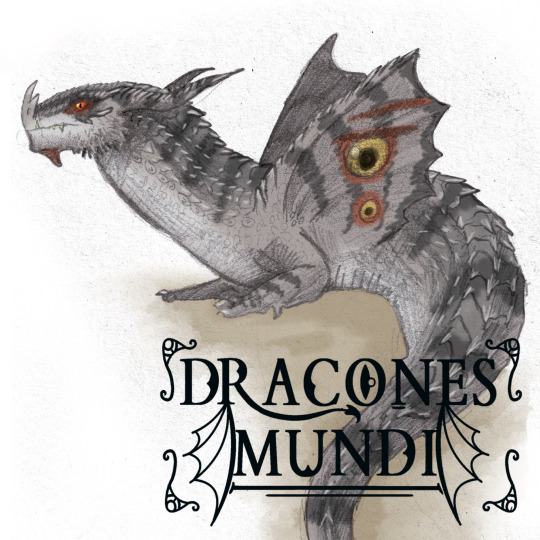
So, you go to the cinema to watch the latest block busting dragon movie, and the dragon is once again a grey spiky wyvern. Why is that? In the world of Dracones Mundi, the grey wyvern is a desert dwelling dragon native to North America. It hunts small mice and lizards around rocky crags, and, for some reason, are very easy to tame to perform tricks.
Back in the day the small wyverns were let loose on miniature sets, these days they perform swooping flights and spit venom 'fire' in front of a greenscreen. With some movie magic, they are scaled up and made to look gigantic and terrifying in films. Whatever your opinion on actor animals, these dragons are responsible for the public idea on what a dragon 'should' look like. Spiky, fierce, dark and bristling with spines.
For more dragons every monday, follow my project @draconesmundi
P.S I know irl the reason we get grey spiky wyverns in films is down to making realistic looking dragons, but I just aesthetically love them and despite all my dragons aiming for 'realism' I wanted to pay a tribute to this trope
26 notes
·
View notes
Text

Quick doodles of dragons with similar body types - the Taniwha, Australian Rainbow Serpent, the Wanizame and the Mo'o. I am still working things out with regards to colours and patterns and fine tuning these designs.
I realize a lot of the dragons I have queued for Dracones Monday posts are ones I already have some art of (albeit old, outdated art) so I did a headcount and of the 65-70 dragon species planned, there are only 17 which have never had drawings of them on this blog, which is pretty good going!
So if the past 20 Dracones Mondays look familiar, if the next 4 look familiar, and maybe 28 further dragons after that ring a bell (52 dragons in total) then I apologise, but I will try and depict some new dragons soon!
The dragons I haven't shown off properly are the angont, the chicken headed serpent, the grootslang, the makara, the markupo, the snapdragon (if canon?), the Australian rainbow serpent, the taniwha, the wanizame, the butterfly winged serpent (if canon?), the kongomato, the kurrea, the ?pterosaur dragon? (?if canon? my notes here are ???), the ropen, the Antarctic Jaculus and the Oceanic Turtle Dragon (?if canon?)
24 notes
·
View notes
Text
Stone Turtle of Karakorum, Mongolia, c. 1235-1260 CE: this statue is one of the only surviving features of Karakorum, which was once the capital city of the Mongol Empire
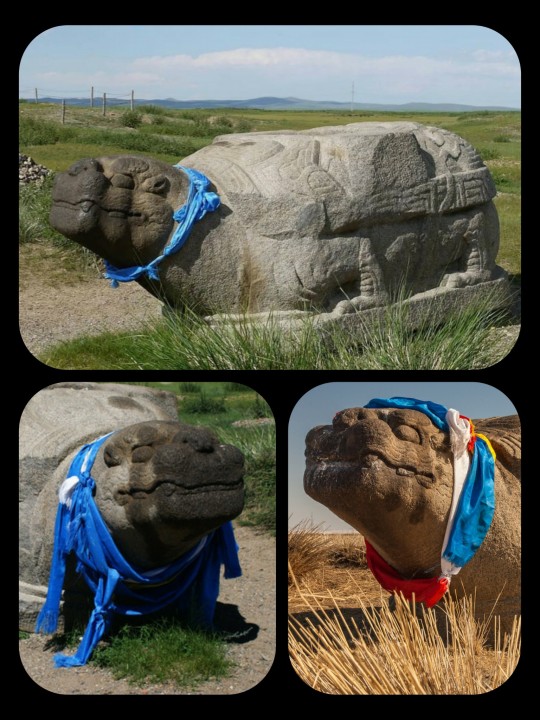
The statue is decorated with a ceremonial scarf known as a khadag (or khata), which is part of a Buddhist custom that is also found in Tibet, Nepal, and Bhutan. The scarves are often left atop shrines and sacred artifacts as a way to express respect and/or reverence. In Mongolia, this tradition also contains elements of Tengrism/shamanism.
The city of Karakorum was originally established by Genghis Khan in 1220 CE, when it was used as a base for the Mongol invasion of China. It then became the capital of the Mongol Empire in 1235 CE, and quickly developed into a thriving center for trade/cultural exchange between the Eastern and Western worlds.
The city attracted merchants of many different nationalities and faiths, and Medieval sources note that the city displayed an unusual degree of diversity and religious tolerance. It contained 12 different temples devoted to pagan and/or shamanistic traditions, two mosques, one church, and at least one Buddhist temple.
As this article explains:
The city might have been compact, but it was cosmopolitan, with residents including Mongols, Steppe tribes, Han Chinese, Persians, Armenians, and captives from Europe who included a master goldsmith from Paris named William Buchier, a woman from Metz, one Paquette, and an Englishman known only as Basil. There were, too, scribes and translators from diverse Asian nations to work in the bureaucracy, and official representatives from various foreign courts such as the Sultanates of Rum and India.
This diversity was reflected in the various religions practised there and, in time, the construction of many fine stone buildings by followers of Taoism, Buddhism, Islam, and Christianity.
The prosperous days of Karakorum were very short-lived, however. The Mongol capital was moved to Xanadu in 1263, and then to Khanbaliq (modern-day Beijing) in 1267, under the leadership of Kublai Khan; Karakorum lost most of its power, authority, and leadership in the process. Without the resources and support that it had previously received from the leaders of the Mongol Empire, the city was left in a very vulnerable position. The residents of Karakorum began leaving the site in large numbers, until the city had eventually become almost entirely abandoned.
There were a few scattered attempts to revive the city in the years that followed, but any hope of restoring Karakorum to its former glory was then finally shattered in 1380, when the entire city was razed to the ground by Ming Dynasty troops.
The Erdene Zuu Monastery was later built near the site where Karakorum once stood, and pieces of the ruins were taken to be used as building materials during the construction of the monastery. The Erdene Zuu Monastery is also believed to be the oldest surviving Buddhist monastery in Mongolia.
There is very little left of the ruined city today, and this statue is one of the few remaining features that can still be seen at the site. It originally formed the base of an inscribed stele, but the pillar section was somehow lost/destroyed, leaving nothing but the base (which may be a depiction of the mythological dragon-turtle, Bixi, from Chinese mythology).
This statue and the site in general always kinda remind me of the Ozymandias poem (the version by Horace Smith, not the one by Percy Bysshe Shelley):
In Egypt's sandy silence, all alone,
stands a gigantic leg,
which far off throws the only shadow
that the desert knows.
"I am great OZYMANDIAS," saith the stone,
"The King of Kings; this mighty city shows
the wonders of my hand."
The city's gone —
naught but the leg remaining to disclose
the site of this forgotten Babylon.
We wonder —
and some Hunter may express wonder like ours,
when thro' the wilderness where London stood,
holding the wolf in chace,
he meets some fragment huge,
and stops to guess
what powerful but unrecorded race
once dwelt in that annihilated place
Sources & More Info:
University of Washington: Karakorum, Capital of the Mongol Empire
Encyclopedia Britannica: Entry for Karakorum
World History: Karakorum
174 notes
·
View notes
Text

A strong-backed dragon. He carries heavy weights upon his shoulders, with words and images of importance often carved in the stone resting atop his shell.
37 notes
·
View notes
Text
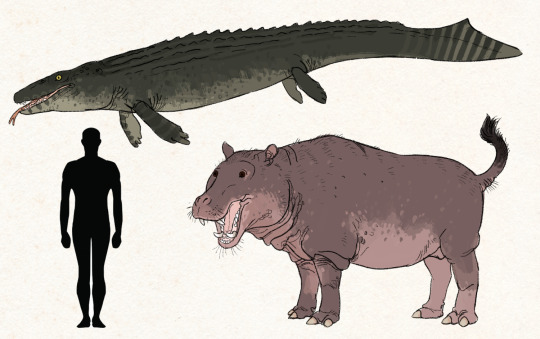
The two greatest beasts found in imperial Wardin's waterways, the river drake and the an-nechoi.
River drakes are actually small freshwater leviathans, with their resemblance to crocodiles being a result of convergent evolution. Juvenile drakes live in small, loose groups, but breeding adults are solitary. Full grown adults of the size seen here are rare, and legends speak of river drakes who grew twice as large in ancient times. This may be rooted in truth, as many of Wardin's rivers have depleted in size orr are heavily trafficked, and territory that can sustain such a large adult is increasingly rare.
They kill humans less frequently than crocodiles (also widely found in this region) but tend to have an elevated place in the cultural schema, partly due to their rarity and partly due to their inconspicuousness (they give live birth and never need to emerge on land, and can live completely undetected in an area for years). It is actually juveniles and smaller adults who are more dangerous to humans. Big, older animals do not need to feed as frequently and tend to reserve feeding for seasonal river crossings by migratory antelopes. They spend most of their time expending little energy, often staying so still at the river's surface to bask that water plants collect on their backs.
Nechoi are a family of large omnivorous hooved animals, and an-nechoi are the biggest and most aquatic of the bunch. Their jaws are exceptionally powerful, used in intraspecific combat. They spend most of their day keeping cool in water (usually slow flowing rivers), emerging at night to feed. Most of their diet is plant matter, but they readily scavenge and opportunistically kill prey.
Adult males form territories stretching up to a mile or so from a riverside and will aggressively defend them against other males (and other large animals that compete for food). Females move freely between territories, flocking to males who control the largest and most bountiful stretches of land. While resting in water, they are comparatively unaggressive and will flock into mixed-sex groups (though males will fight even in water when in the presence of receptive females)
An-nechoi are considered very dangerous to humans. Most attacks on humans are a result of territorial aggression or defense of their young, but are occasionally predatory in nature (and they will usually eat their kill either way). They are also known for stealing catches from fishermen, and appearing at the kill sites of hunters on land to scavenge the carcass. They are rarely targeted in subsistence hunting, but are some of the most sought after game in recreational hunts, with a killing of a bull an-nechoi being a marker of status and glory for an experienced hunter.
#Blightseed#Worldbuilding#riverdrakes are so thalattosuchiancore#as a thalattosuchian researcher I stopped and was like WHOAH IS IT??!!?!? but alas tis a fantasy beast#very well designed fantasy beast#serpentface strikes again with the cool worldbuilding
224 notes
·
View notes
Photo

Giant Bìxì (赑屃) of Purple Mountain, a Chinese mythological creature known as the eldest son of Dragon King’s nine sons. Bìxì represents good luck, longevity, prosperity and strength.
📷: @eazytraveler
.
.
.
#explorechina #discoverchina #chinawanderer #travel #traveling #traveler #adventure #adventurejunkie #trekking #hiking #bixi #dragonturtle #purplemountain #nanjing #jiangsu #china #travelgram #rvvlich (at Purple Mountain)
13 notes
·
View notes
Text
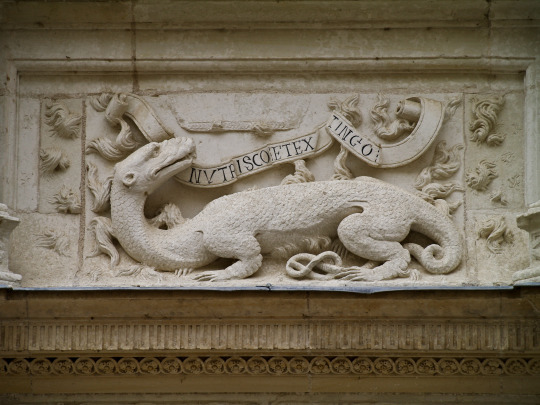
Francois I adopted the salamander as his emblem, with the motto nutrisco et extingo, “I nourish and extinguish", in other words "you'll get what's coming to you".
The sulfurous salamander seen here is from Azay-le-Rideau.
132 notes
·
View notes
Text
Some of the art I've done for folklore from my homeland of Asturias:
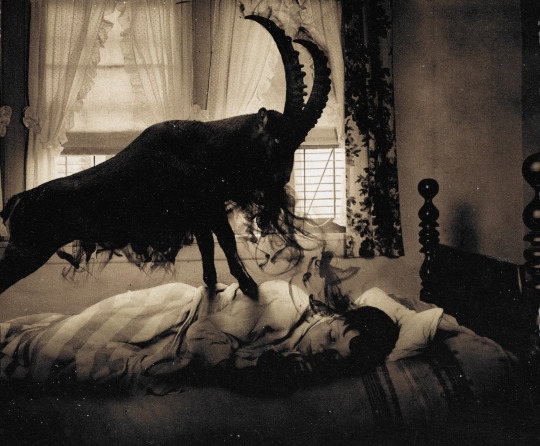
El Pesadiellu haunts people in their sleep. It will stand atop you, pressing down on your chest to cause suffocation and nightmares. As soon as you wake, it will vanish.
It takes many forms, from a huge hairy hand (la Manona), to a male goat, to a purely invisible being. All across Asturias, it is believed to be the cause of many of the horrors that affect us in our slumber.

In the forests of Asturias, people know to beware of the scraping sound of washboards near streams. It means the Llavanderes are working.
One of the washerwomen will ask for help drying her blood-soaked shroud. Never twist it in the same direction as her, or she will drown you.

El Sumiciu is an entity that embodies the void. When someone loses an object that seemed to be in front of them moments ago, they will usually accuse the greedy Sumiciu of swallowing it.
Oft misconceived as a house elf, its true shape is shrouded in mystery.
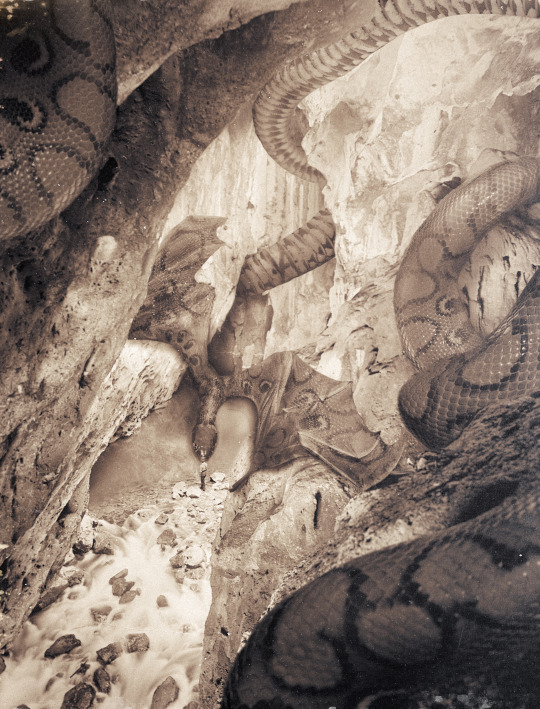
When travelling the craggy mountains of Asturias, beware the hiss of the Cuélebre, a winged serpent which grows over the aeons until the earth trembles under its weight.
If you are foolish enough to seek its treasure, find its cave on the Summer Solstice, when it is weakest. You must bring an offering it may feed on, and hide inside it knives and needles that will slay it from within.
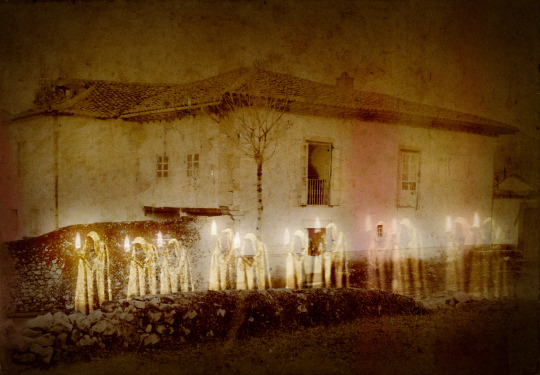
This picture was taken the night when two kids passed away from tuberculosis in a small Asturian village, 1892.
In these remote areas people still tell the tales of La Güestia, a ghostly procession that will march towards a dying person's house and carry them off to join them.
#Cuélebre#Asturias#Spain#Mythology#Spanish Mythology#THANKS SO MUCH FOR THE TAG!!!! reblogging to my Dracones blog rather than my main one because Cuélebre is in Dracones Mundi
489 notes
·
View notes
Text
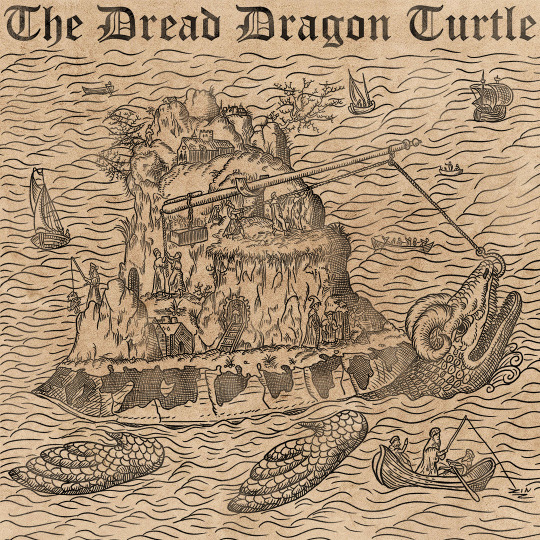
Dragon Turtle if the Monster manual was written in 1557
59 notes
·
View notes
Text

Commission for @brigamia of their Sunchaser dragon Anarion! I love painting glowing things so I appreciated the mana star in the design, and the character's sunset colours inspired me for the background.
My commissions are open at a flat rate of £20 for an artwork of a dragon - more info can be found here: https://ko-fi.com/northwyrm/commissions
19 notes
·
View notes
Text
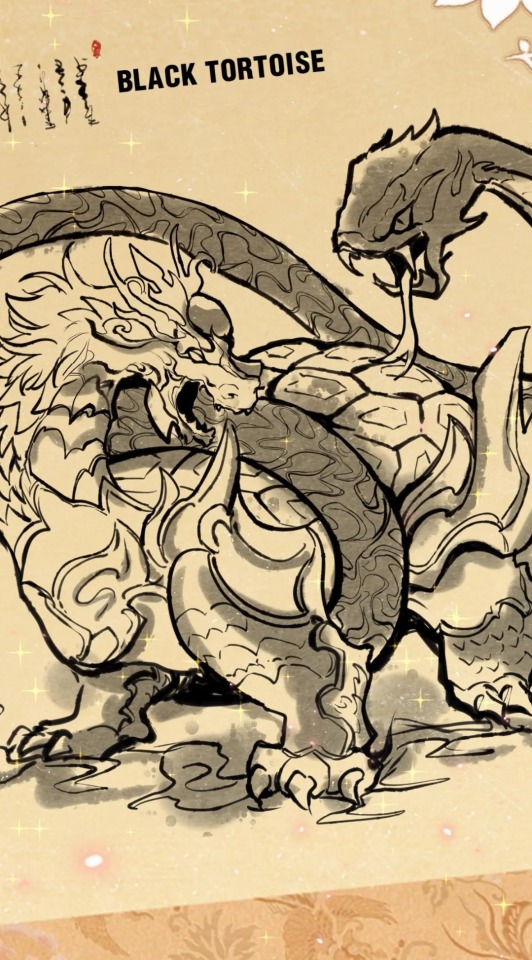
Screencap from the manhua “Demon Apartment,” published by Bilibili with art by Dong Yi. Based on a book of the same name by Zui Yin Chang Ge. You can read the English release here.
11 notes
·
View notes
Photo
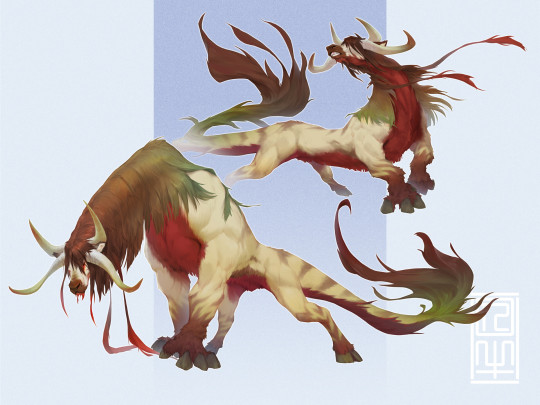
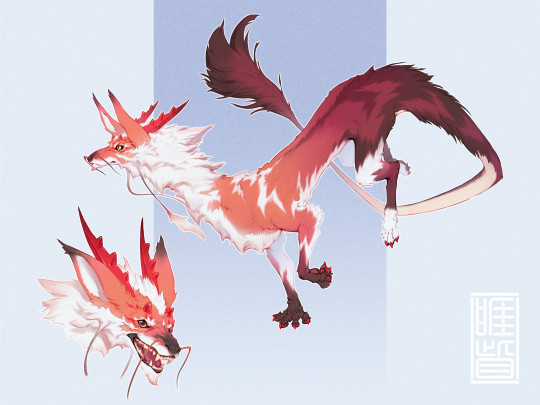
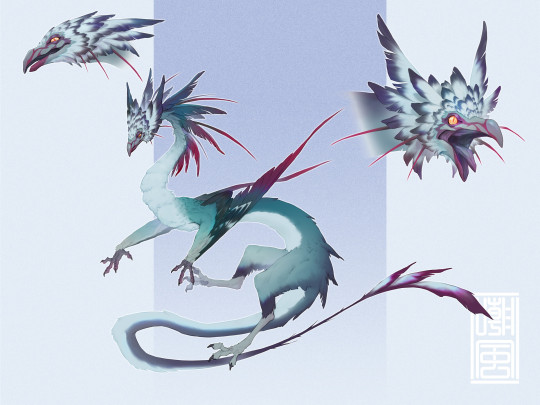
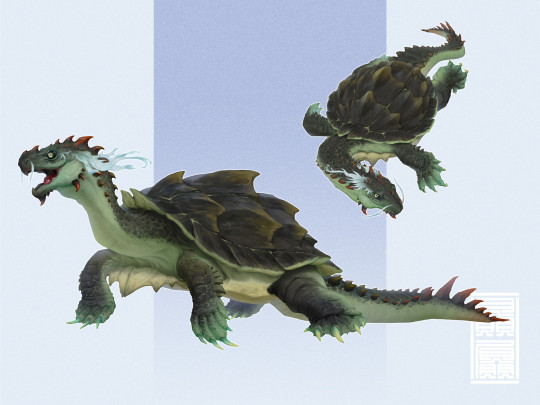
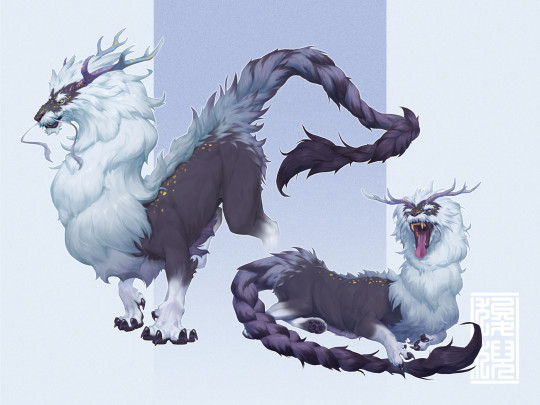
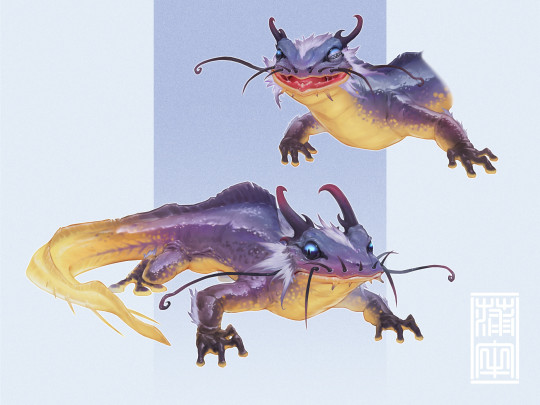
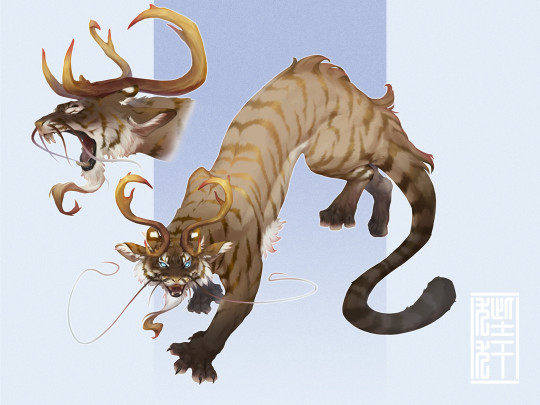
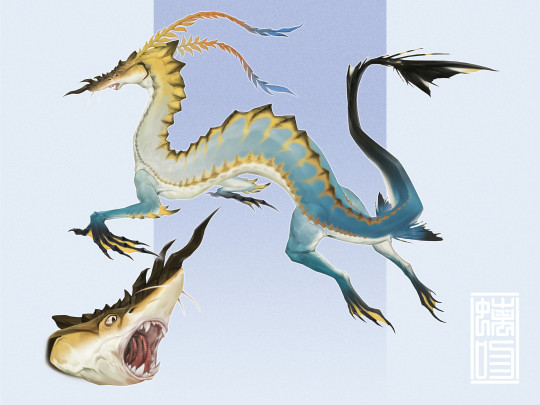

Childs Of Looong by Chen Starry
1K notes
·
View notes
Text

Undying Tales Day 4: Chinese broad headed pond turtle.
In Chinese lore, there is a legendary creature called the Longgui, the Dragon-turtle, who has the head of a dragon and the body of a celestial tortoise. Statues of the Longgui usually show this symbol of protection and longevity on a bed of gold ingots and coins. As a turtle that is being transformed into a dragon higher being, it is also seen as an emblem of upward social movement and transformation towards prosperity.
Little A6 ink drawing
15 notes
·
View notes